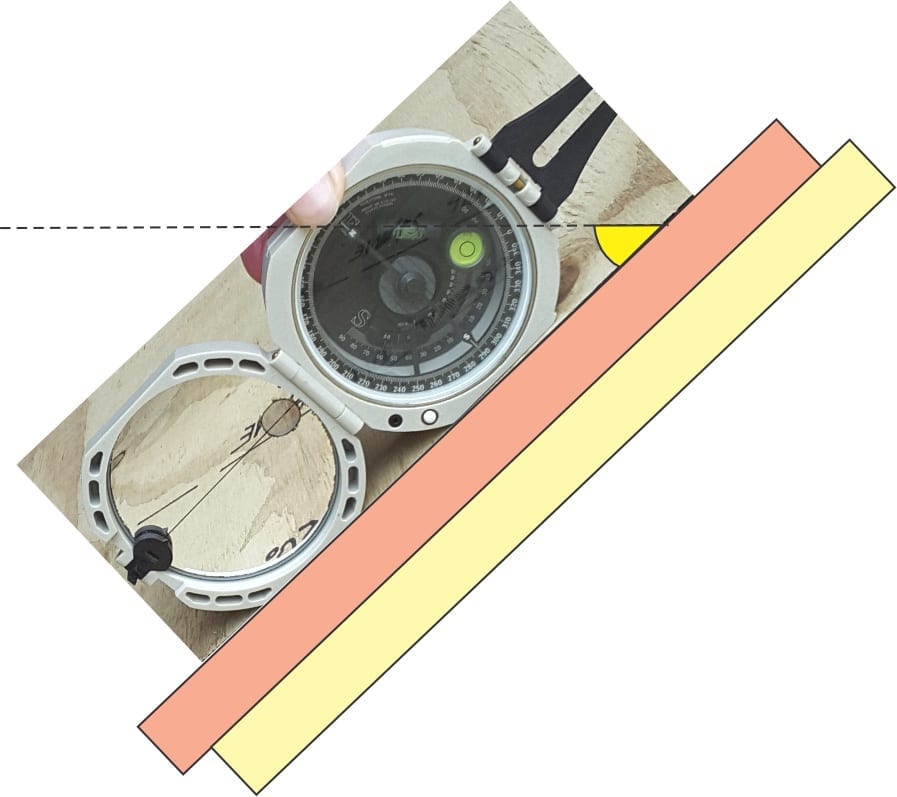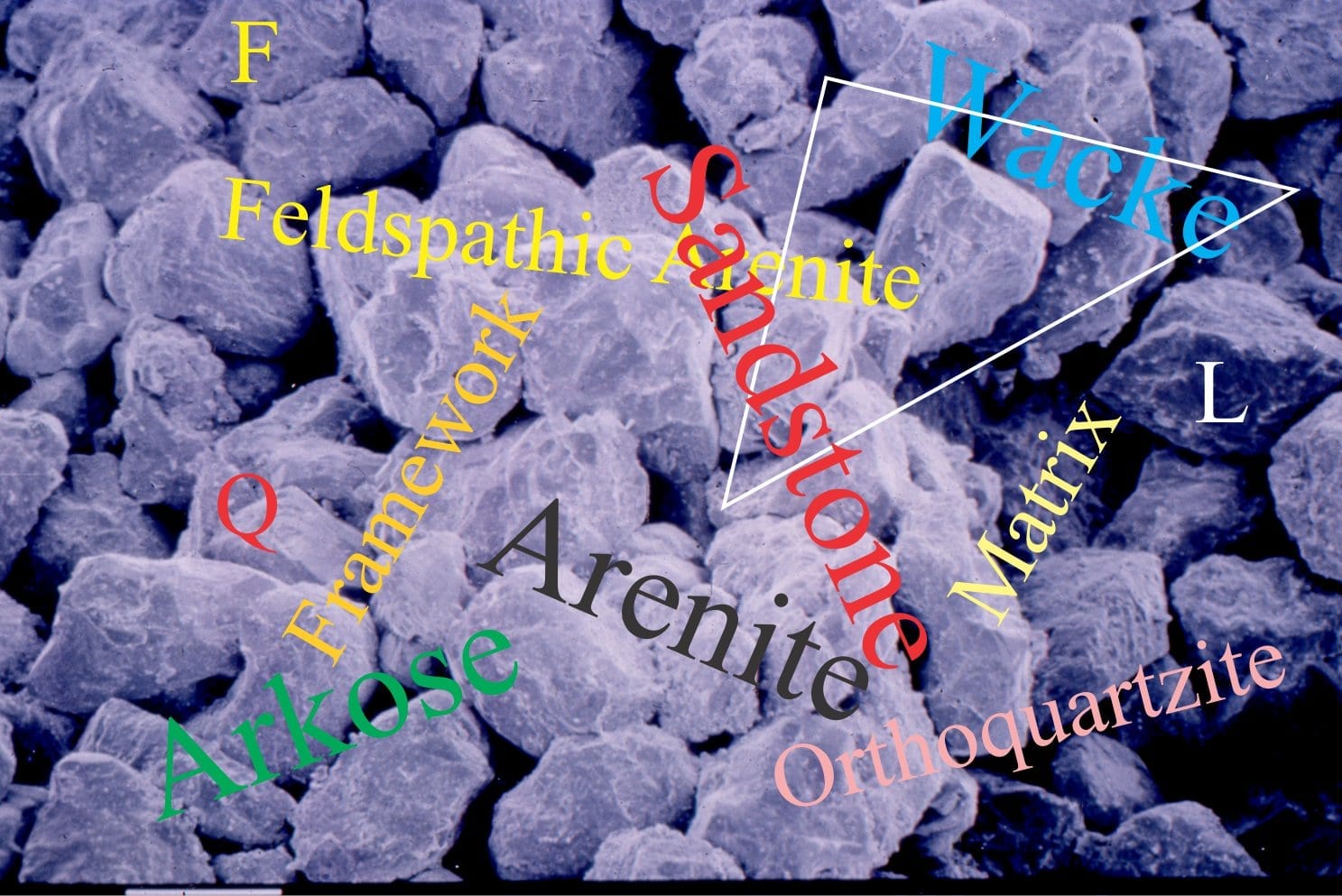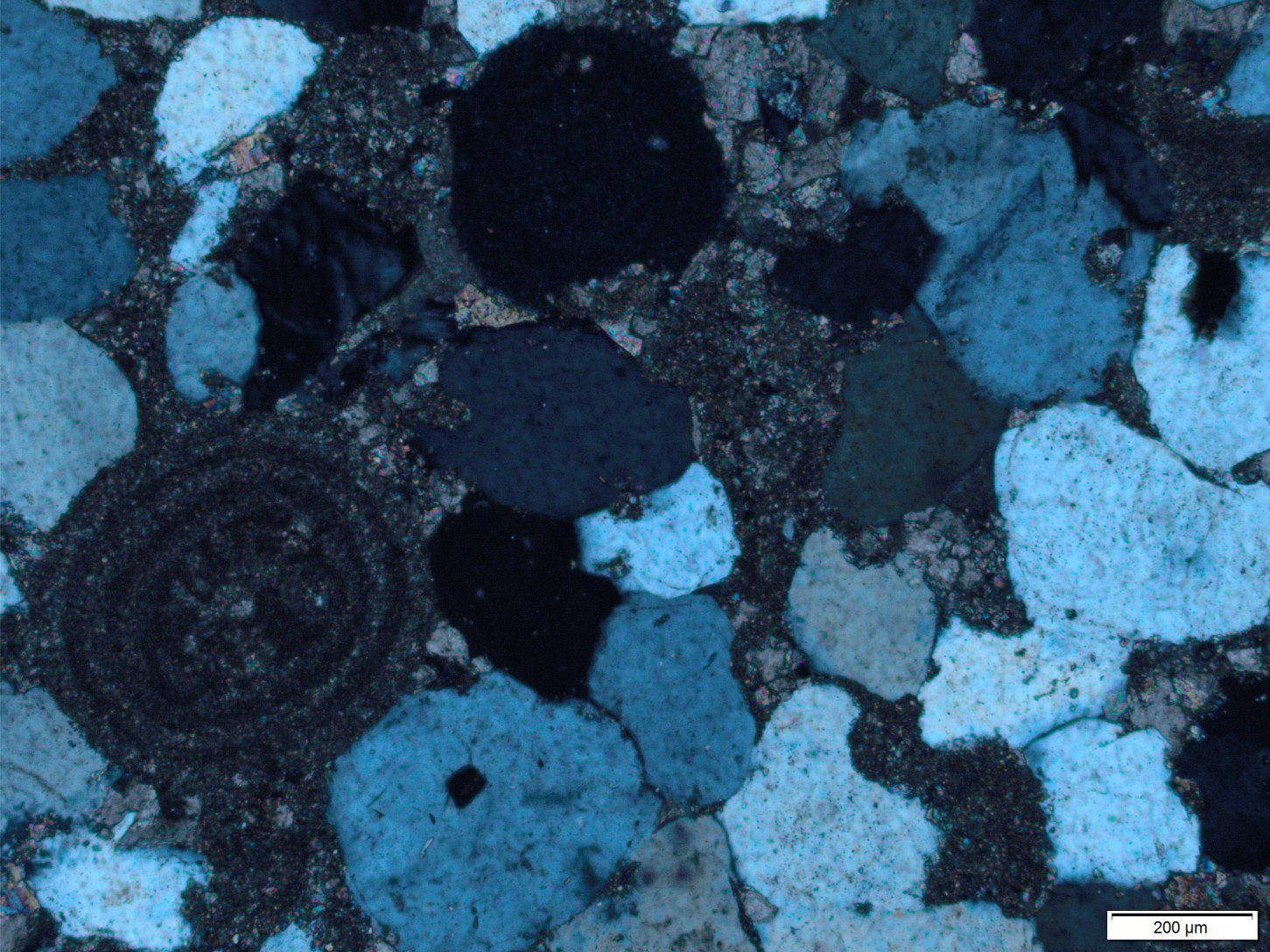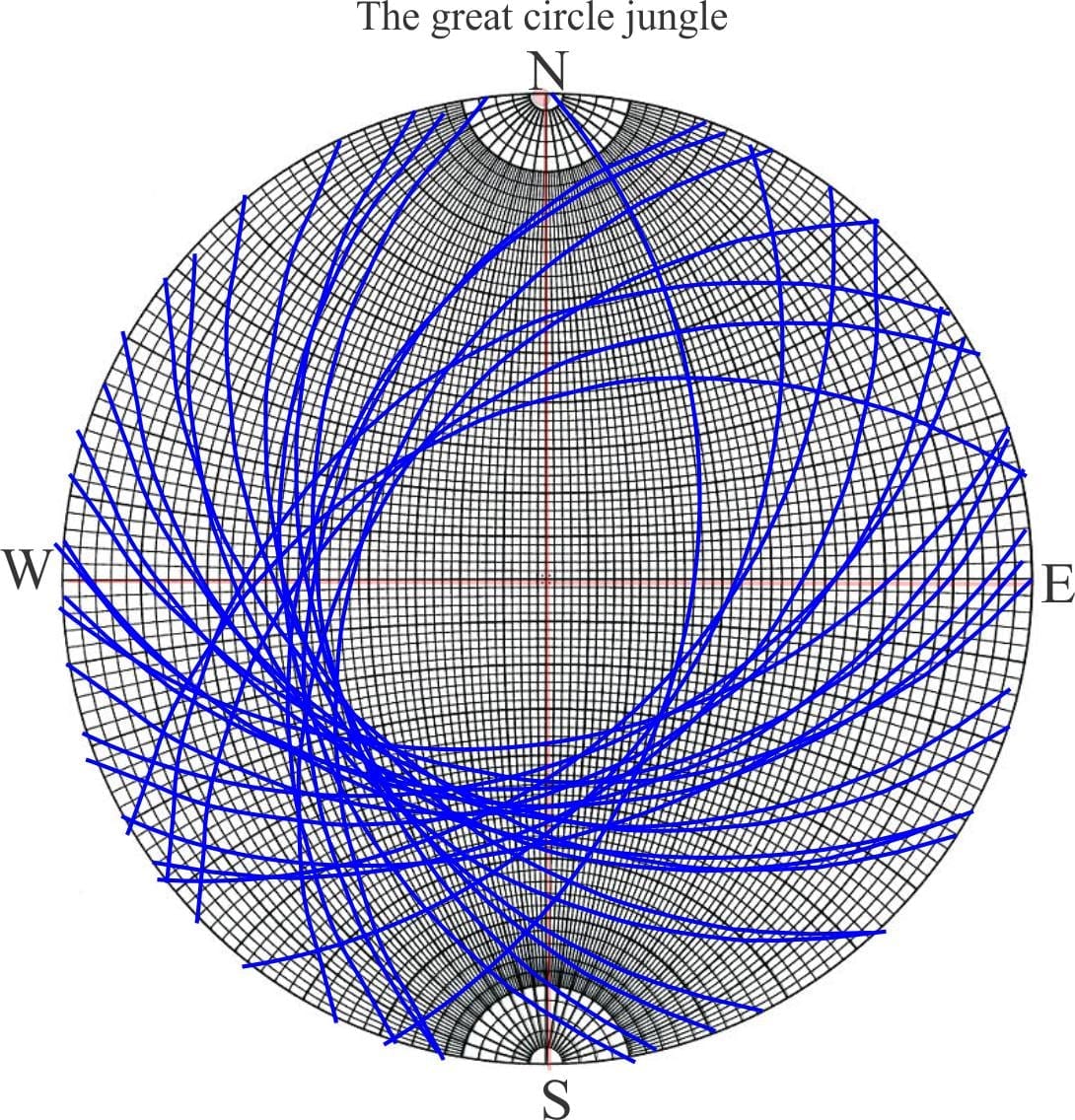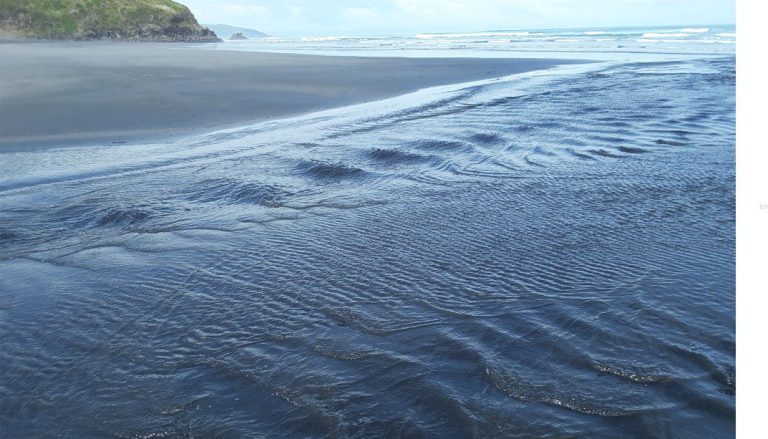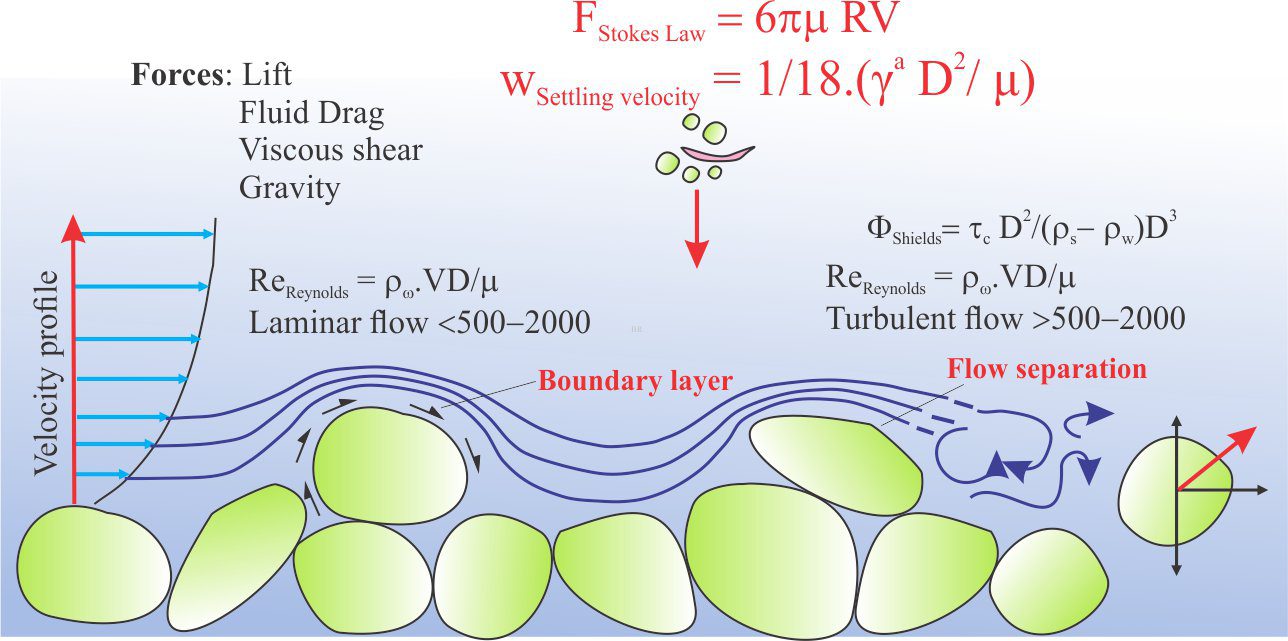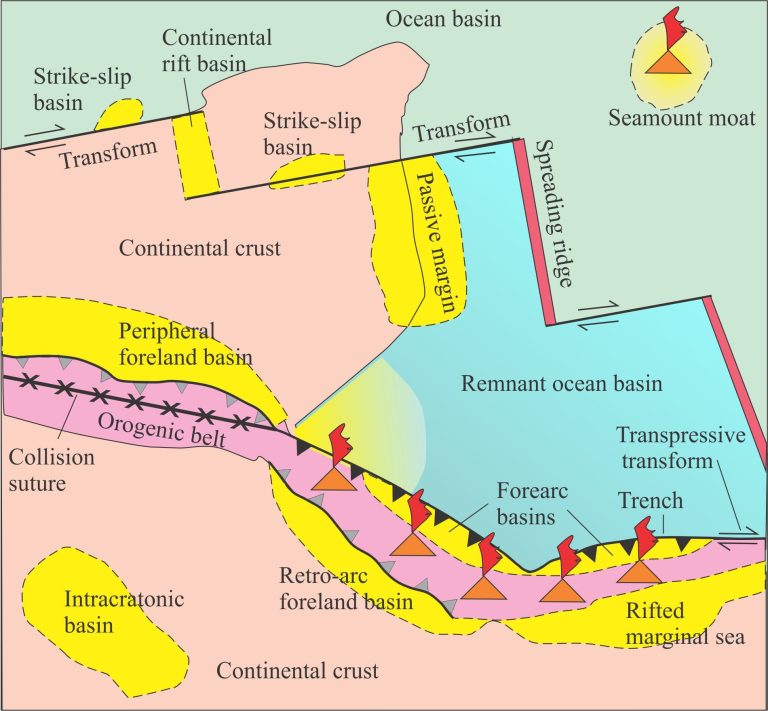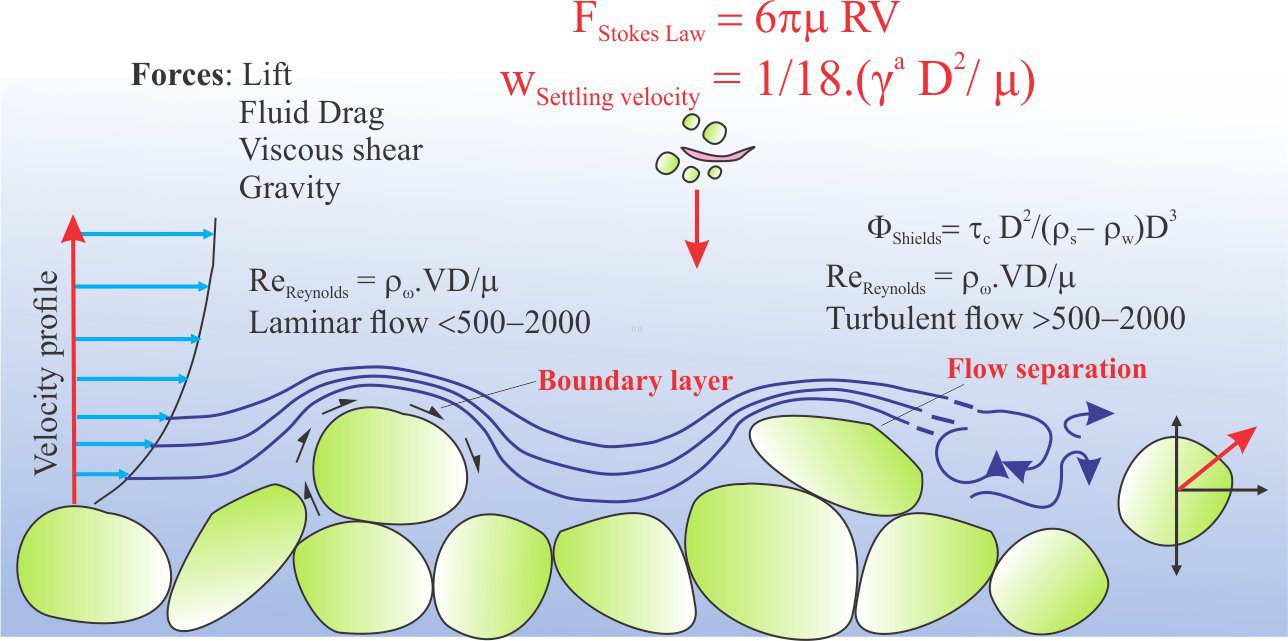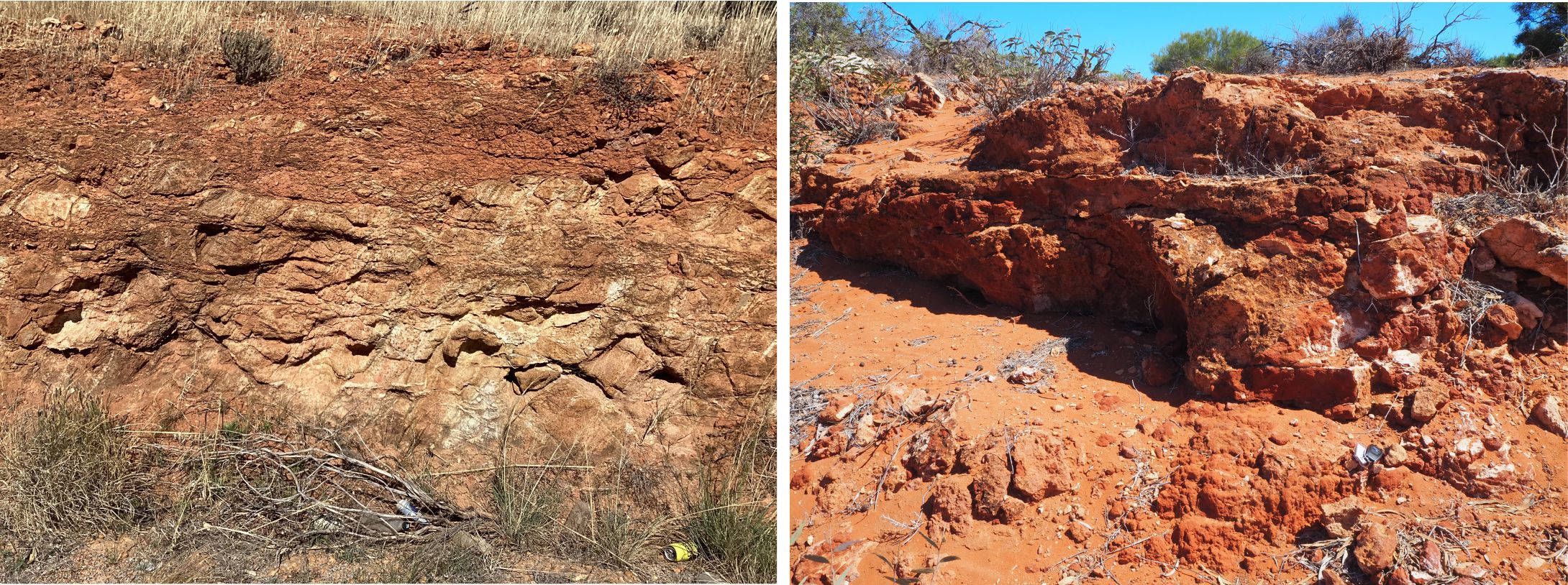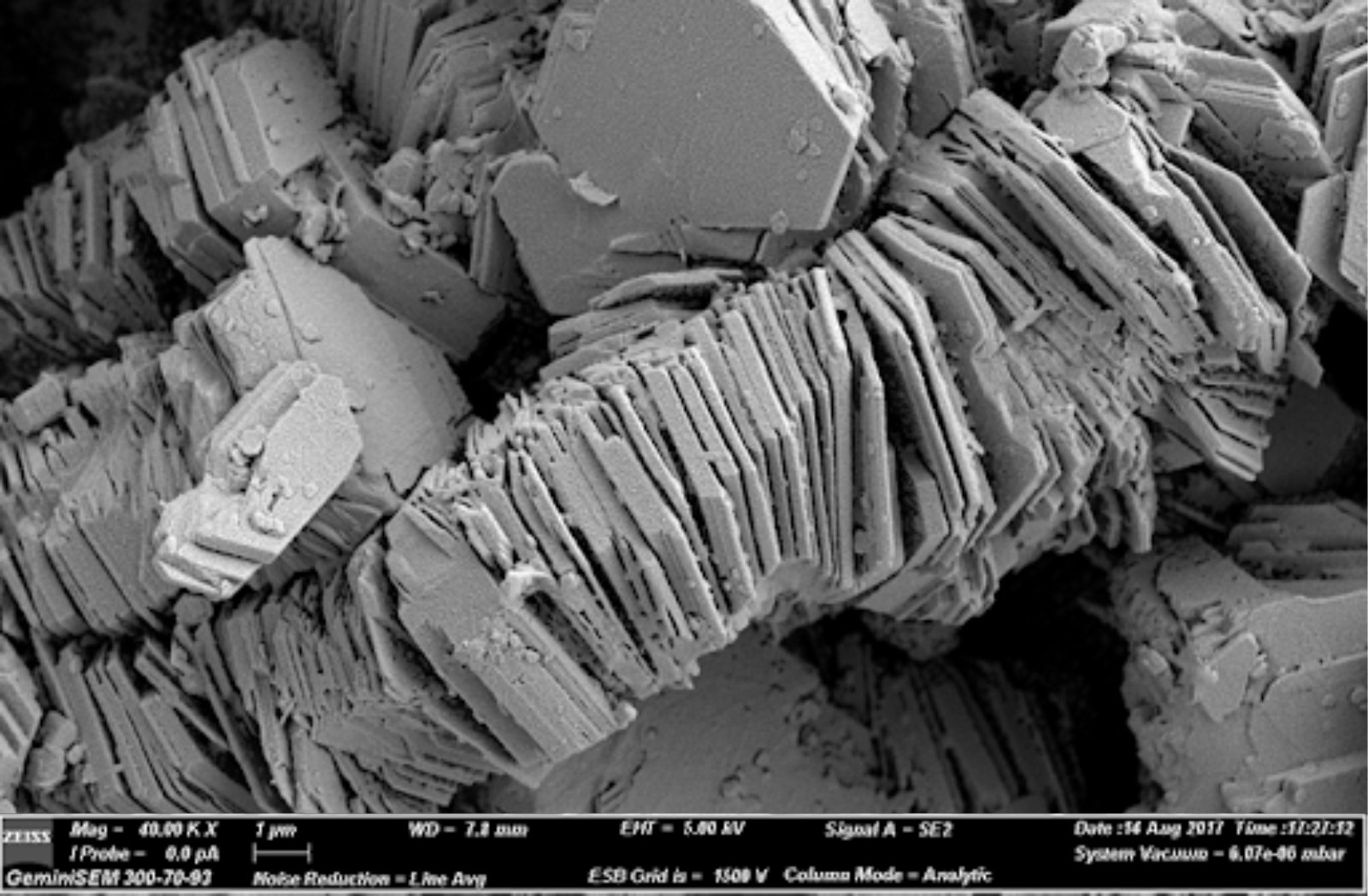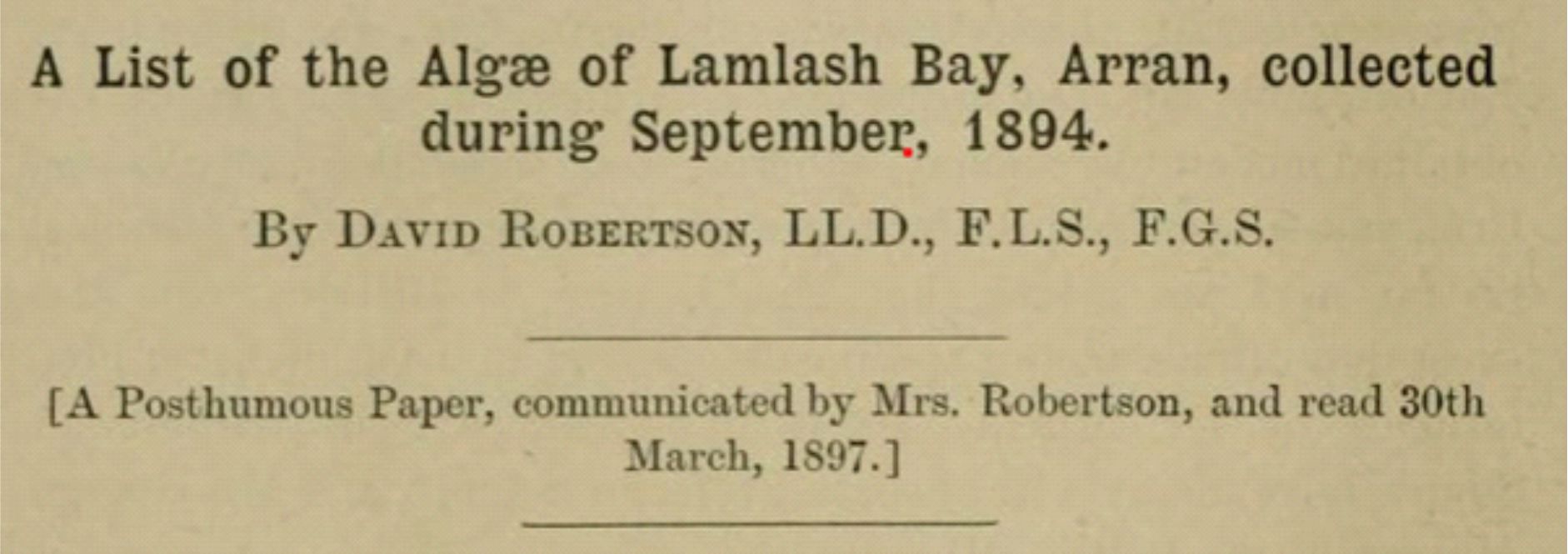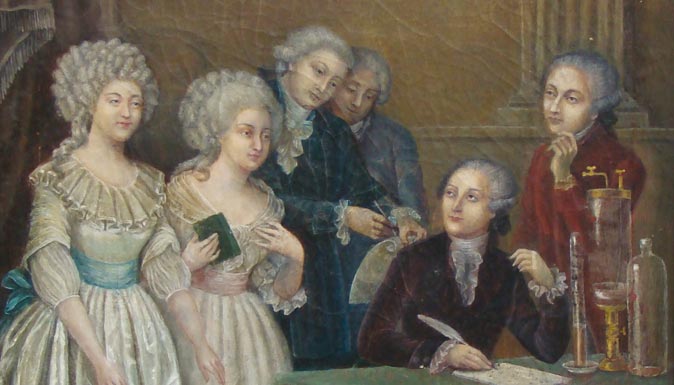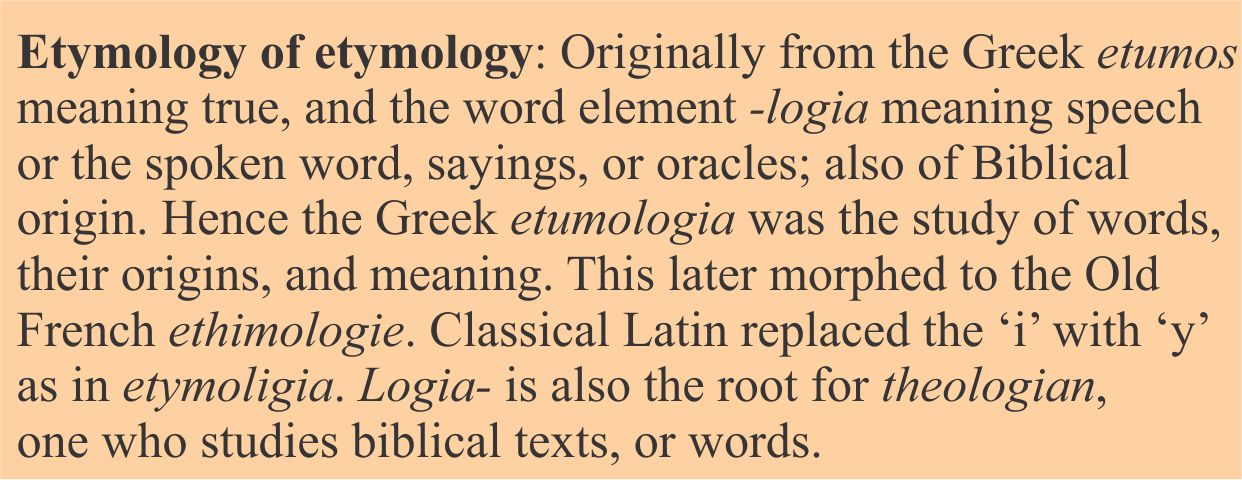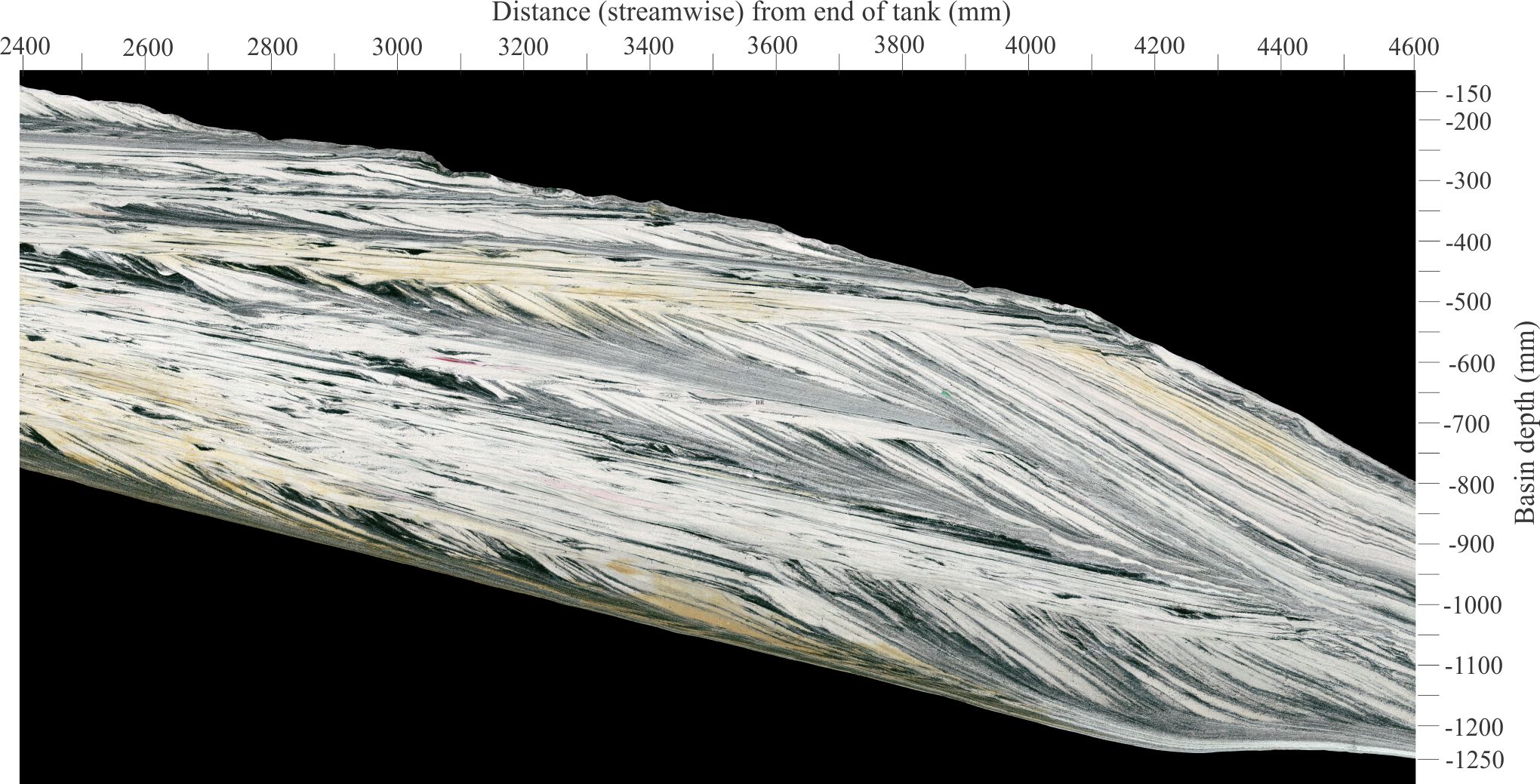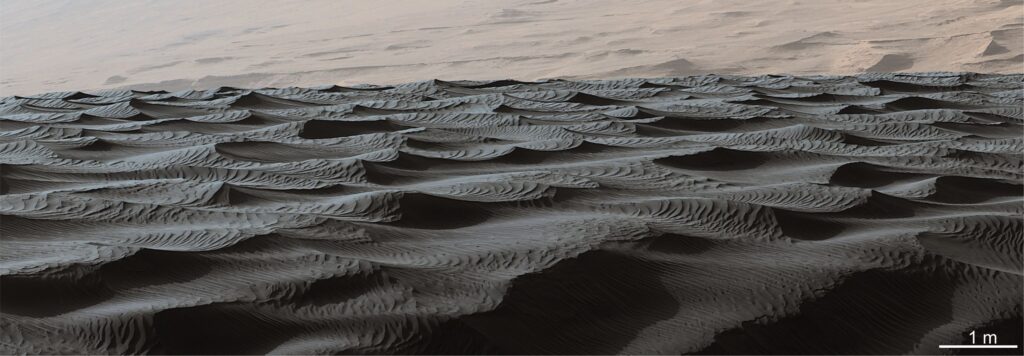
This post is part of a series on Mars geology that focuses on sedimentary processes and systems.
Why focus on Mars bedload processes? Because such processes depend on flowing fluids, such as air and water, interacting with cohesionless sedimentary particles – identification of bedload structures provides additional evidence for the existence of fluids on the ancient and modern Martian surface.
The remarkable successes of Mars rover missions to Gale (Curiosity rover) Eberswalde (Opportunity rover), and Gusev craters (Spirit)have granted science the opportunity to unravel local stratigraphies and apply sophisticated interpretations of paleoenvironments. The databases include many 1000s of images and in situ spectroscopic analyses. Interpretation of Mars ancient sedimentary environments is based on the same principles we apply to terrestrial depositional systems:
- The laws of thermodynamics that govern all physical and chemical interactions.
- Steno’s principles (laws) of superposition.
- Walther’s Law that establishes the relationship between vertical (stratigraphic) and lateral lithofacies associations.
- The principles of hydraulics that govern fluid flow, sediment transport and deposition.
- The essential uniformitarian approach that encapsulates all of the above.
Bedforms
The term bedload refers to transport of sediment across a substrate as:
- A traction carpet – the layer of grains that jostle, slide, and roll in response to currents strong enough to overcome gravitational, frictional and drag forces, and
- A saltation load where grains bounce in the direction of the current, leaving the substrate briefly.
The depositional response to bedload transport is the formation of bedforms (dunes, antidunes, ripples), the internal organization of which is manifested as crossbedding. Crossbeds are one of the most common structures in the sediment rock-record, forming in flowing air, water, sediment-water mixtures (e.g., turbidity currents), and vapour-sediment mixtures such as pyroclastic density flows (e.g., pyroclastic surges and base-surges).
Parallel lamination of granular sediment also represents bedload transport; one form will develop in subcritical flow where flow velocities are too weak to form ripples, and at the other end of the flow energy scale, under supercritical conditions that can also produce parting lineation.
Crossbeds come in many shapes and sizes and the same kinds of structures can form in many different environments – subaqueous and subaerial. Individually they can rarely be attributed to a specific depositional environment. However, they do provide good indications of paleo-hydraulics. Furthermore, their value as paleoenvironmental indicators improves significantly when viewed stratigraphically, for example stratigraphic trends of bedforms in cyclical successions, and their association with other lithofacies and biofacies.
The following notes list the diagnostic features of bedforms commonly identified from images of Mars sedimentary rocks. Most of the images have been downloaded from the NASA Curiosity (Gale crater) Mastcam and MAHLI (hand-lens), and Opportunity (Meridiani Planum) image libraries.
Tabular crossbedding
Also called planar crossbedding, 2-dimensional (2D) subaerial and subaqueous dunes, sand waves, mega-ripples.
- Foresets are planar to slightly concave downflow. They dip close to 34o in dry sand, 15o – 20o in water saturated sand, and 20o-40o in wet sand.
- Crossbed foresets are bound by planar contacts that in cross-section appear flat (cf. trough crossbedding).
- The lower bounding surface commonly erodes earlier deposits.
- Foreset contacts with the lower bounding surface may be abrupt or tangential. The latter indicates higher flow velocities.
- Foreset contacts with the upper bounding surface may be tangential but are more commonly abrupt because of erosion by overlying bedforms.
- Bedform crests are relatively straight (hence their designation as 2D dunes).
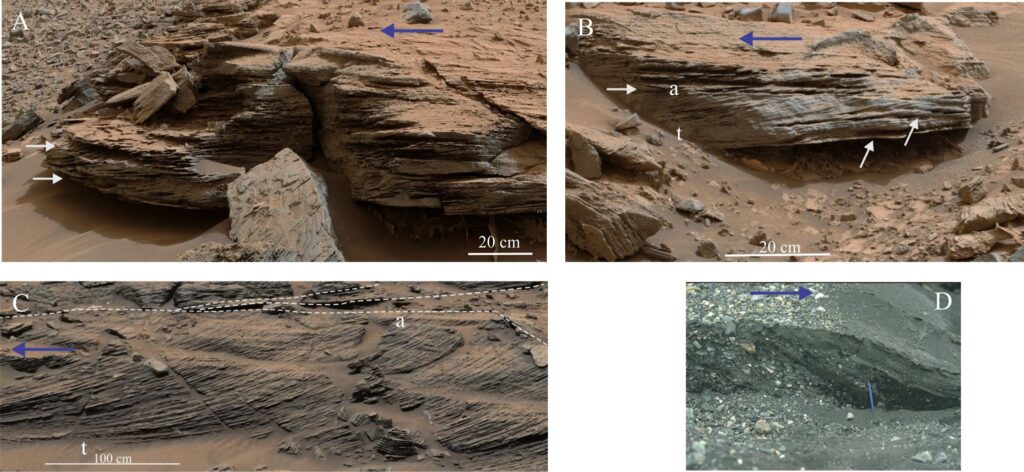
Planar Crossbeds form as subaerial dunes, and in subaqueous, confined channelized flow and sheet flow; common settings for the latter on Earth include sandy shelves, platforms, and tidal flats. Martian settings include subaerial sand dunes – one of the better-known examples is the late Hesperian – early Amazonian Stimson Formation that represents an early stage of the prolonged Mars desiccation (Grotzinger et al., 2005; Banham et al., 2021).
Trough crossbedding
Also called 3D dunes
- Foresets are moderately to strongly concave downflow
- The lower bounding surfaces of foresets are concave in 2D cross-sections, and spoon- or scour-shaped in 3D.
- Lower bounding surfaces commonly truncate earlier formed crossbeds. The bedding expression of this pattern is a set of intersecting arcuate planes, commonly called festooned bedding.
- Foreset contacts with the lower bounding surface are mostly tangential. The upper contacts are usually truncated.
- In plan view, bedform crests are arcuate, hence the reference to 3D dunes.
Trough crossbeds form by simultaneous avalanching of sand (or gravel) down the lee face and concomitant scouring immediately downstream of the lee face; advancing foreset laminae fill the scoured surface. They tend to form where flow is confined, as in fluvial, tidal, and some submarine channels, and where flow is semiconfined, for example in subaerial interdune regions subjected to intermittent surface runoff, or shallow marine and intertidal platforms where flow is focused by sand bars.
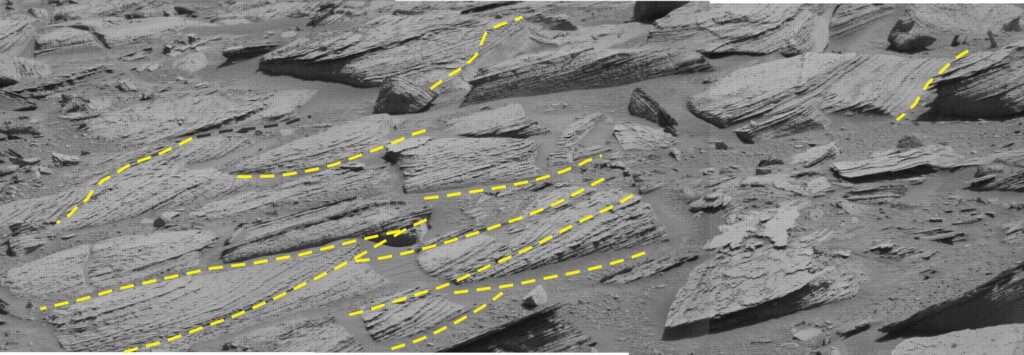
Good examples have been reported in Gale crater from the Stimson Formation, the lower member of the Late Noachian Greenheugh sandstone (Heydari et al., 2023), and Opportunity rover images from interdune-playa deposits of the Burns Formation, Meridiani Planum (Grotzinger et al., 2005, op cit).
The example below at location Volcán Peña Blanca ridge was stitched together from eight Mastcam raw images taken on Sol 4594 and 4593, apparently taken about 10 m from the rock face. Four distinct units are exposed here, the central unit consisting of multiple trough crossbeds (white brackets). Some of the bedform contacts have been traced.
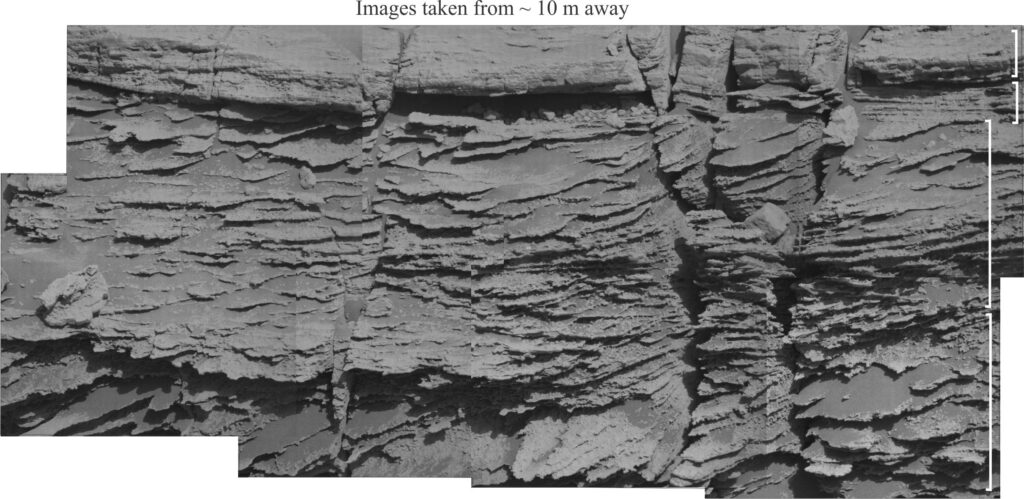
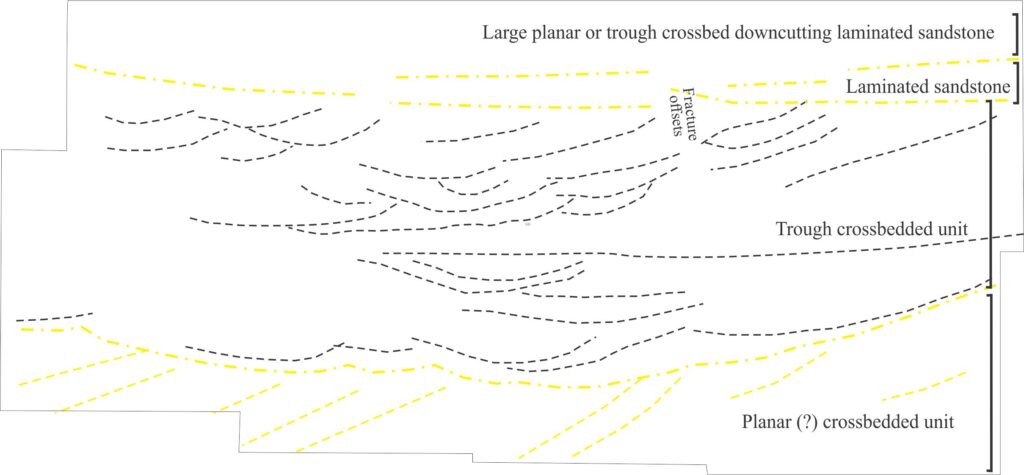
Asymmetric ripples
Also called current ripples.
- The term ripple is generally reserved for bedforms 2-3cm in amplitude and wavelengths a few centimetres to 10s of centimetres. On average they are formed in fine- to medium-grained, cohesionless sand (of any composition).
- Plan view (3D) geometries are variable, with crest line shapes ranging from straight, bifurcate, lunate, and cuspate (symmetric ripples and climbing ripples are treated separately).
- Despite the geometric variability, all asymmetric ripples have one thing in common – crossbedding that dips downflow, preserving an advancing lee face.
Asymmetric ripples are one of the most common bedforms known. They form almost anywhere there is loose sediment and unidirectional bottom currents. On Mars they have been reported in strata interpreted as aeolian dune and inter dune, delta platform, fluvial channel, and lacustrine settings ranging from shoreline to deep water.
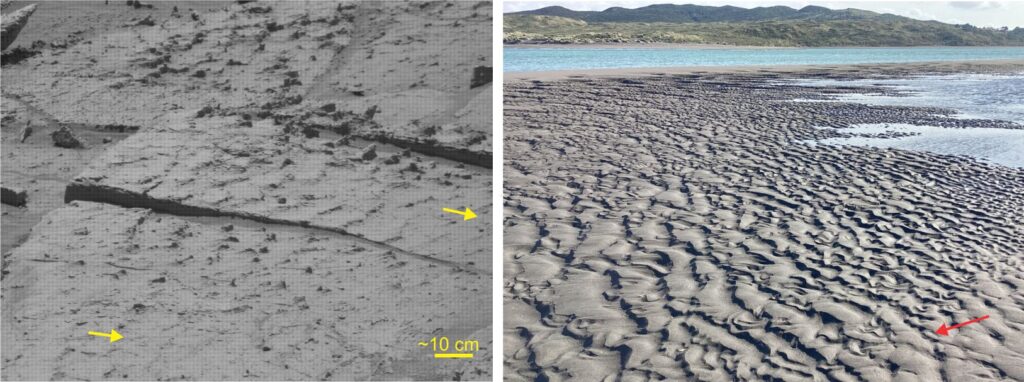
Symmetric ripples
Also called wave ripples.
- The descriptor ‘symmetric’ refers to the internal organization of the crossbedding – foresets dip in opposite directions, about 180o apart. Symmetry may also apply to their profile geometry, but this is not always the case.
- In all other respects, they are similar to asymmetric ripples, but their formation is fundamentally different; symmetric ripples with se crossbed attributes represent the to-and-fro movement of sand in concert with the passage of surface (gravity) waves and wave orbitals. In this case, the opposite dipping ripple faces are transverse to wave propagation – one face dips towards a shoreline, and the other offshore.
- The orientation of symmetric ripple crests is approximately parallel to shoreline – they are valuable indicators of paleoshoreline orientations.
- Symmetric and asymmetric ripples can occur together in the same bed; in some cases, asymmetric ripples can be modified by waves to create more symmetric bedforms.

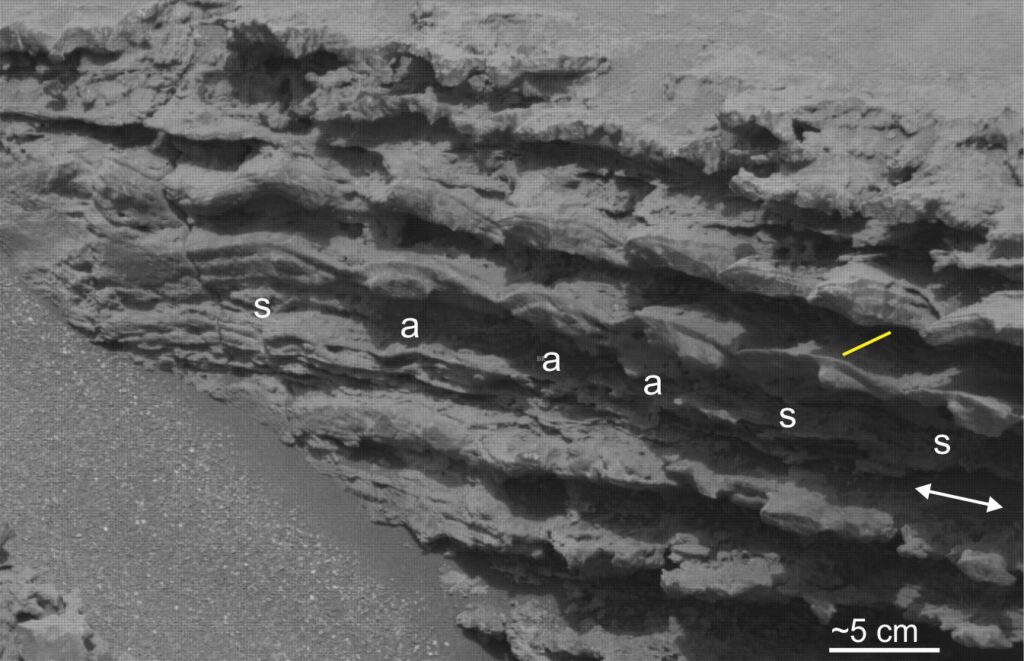
Climbing ripples
Also called ripple drift.
- A typical climbing ripple profile is manifested as ripple crossbed sets migrating over the upstream, or stoss face of earlier-formed ripples. Climbing ripples are one of the few bedforms that preserve stoss-side laminae.
- They can have asymmetric and symmetric profile, depending (at least in part) on the ratio of bedload to suspension load deposition. The view across a depositional surface will show a succession of crossbed sets where upstream ripples migrate over their downstream counterparts. Amplitudes and wavelengths are similar to asymmetric current ripples formed in clear water conditions.
- There are two basic morphological types: ripple sets with lee-face foresets only, and combinations of lee-face and stoss-face laminae – there are several variations on these two end-members.
- The climbing ripple classification schemes in common use were proposed by Jopling and Walker (1968) and Allen (1973), and are summarised in the diagram below.
- They form where there is a combination of bedload and suspended load deposition of fine-grained sand. The angle of climb is proportional to the change in suspended load – an increased suspension load leads to increased angles of climb. Climb angles measured from the substrate commonly range between 10o – 20o. Type 2 climbing ripples of Jopling and Walker are characterized by preservation of lee face laminae in crossbed sets bound by an erosional base/top. Allen, based on flume experiments and numerical modelling, designated the flow conditions in this type of climbing ripple as subcritical where erosion continually moves sediment from the stoss face to the lee face.
- In phase climbing ripples preserve both stoss and lee face laminae in supercritical flow conditions. Here, the thickness and lateral continuity of individual laminae are maximized. For this type, deposition from suspension exceeds the potential for erosion over the stoss face, which means the stoss face is preserved.
- The direction of ripple migration is the same as the direction of foreset dip.
- Outcrops of climbing ripples commonly show the evolution of one type to another, depending on changes in current strength and suspension load sediment
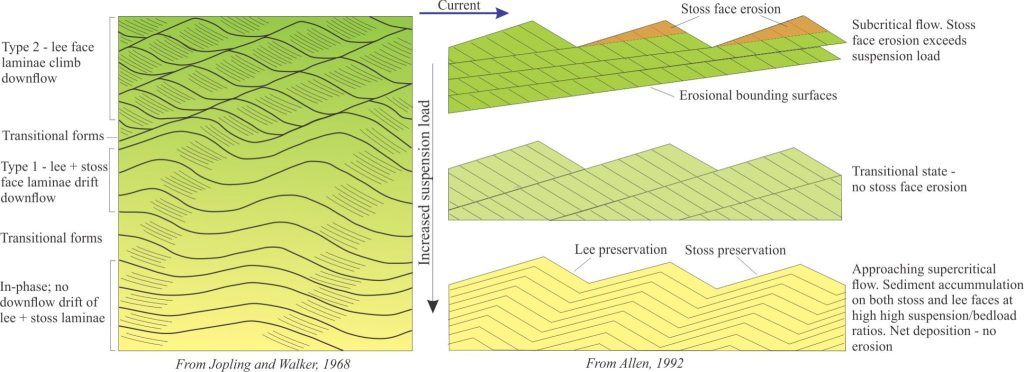
Climbing ripples are one of the more useful ripple bedforms because they not only indicate unidirectional currents, they also require a significant suspension load of sediment. Conditions where both bedload and suspended load occur together tend to be restricted to:
- Fluvial and tidal channel plumes where they enter standing bodies of water, for example hyperpycnal plumes in lakes or seas.
- Sediment suspended by storm waves.
- Sediment gravity flows, particularly turbidity currents.
Some excellent examples from Martian fluvial-lacustrine deposits in Gale crater are shown below.
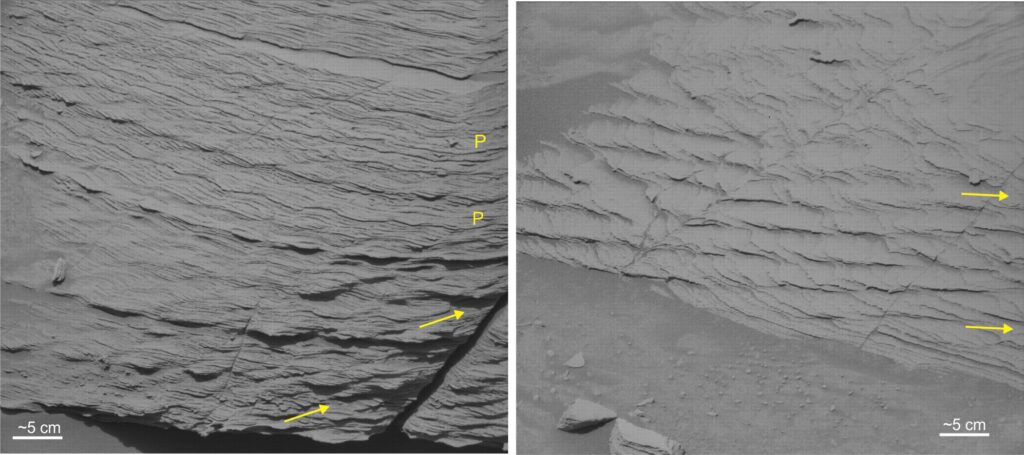
Antidunes
Sometimes incorrectly called standing waves; antidunes are bedforms, standing waves are the surface wave manifestation.
- Antidunes superficially resemble low amplitude ripples and dunes; amplitudes are commonly measured in millimetres to a few 10s of centimetres. Corresponding wavelengths are centimetres to decametres.
- Cross-section profiles range from symmetrical to asymmetrical where the steep face is on the upstream side of the bedform (stoss face). Symmetry and steepness of successive bedforms may change down flow.
- Internal crossbedding is variable, depending on flow conditions. Laminar may be continuous symmetrical and asymmetrical on the upstream and downstream bedform surfaces, such that laminae conform approximately to the antidune surface, or
- Low-angle foresets face Upstream, or stoss backsets (the opposite of subcritical ripples and dunes) – this is one of the more recognisable characteristics of antidune crossbedding, or
- Foresets are low-angle and inclined downstream (lee foresets), or
- Laminae are sinusoidal and extend from the antidune crest to the adjacent trough.
- Lamina dips are generally <10o to 12o for both upstream- and downstream-facing foresets; in comparison, lower flow-regime (subcritical) ripple and dune foreset dips are usually >15o and only occur on the lee surface (an exception are climbing ripples).
- The preserved form of antidunes in outcrop is variable. In some, the complete antidune outline is preserved (either symmetrical or asymmetrical), and it may be possible to trace the depositional surface between adjacent antidunes. However, truncated foresets can also occur resulting in lenticular or lozenge-shaped units – an indication that successive antidunes have migrated along the depositional surface, eroding earlier-formed structures.
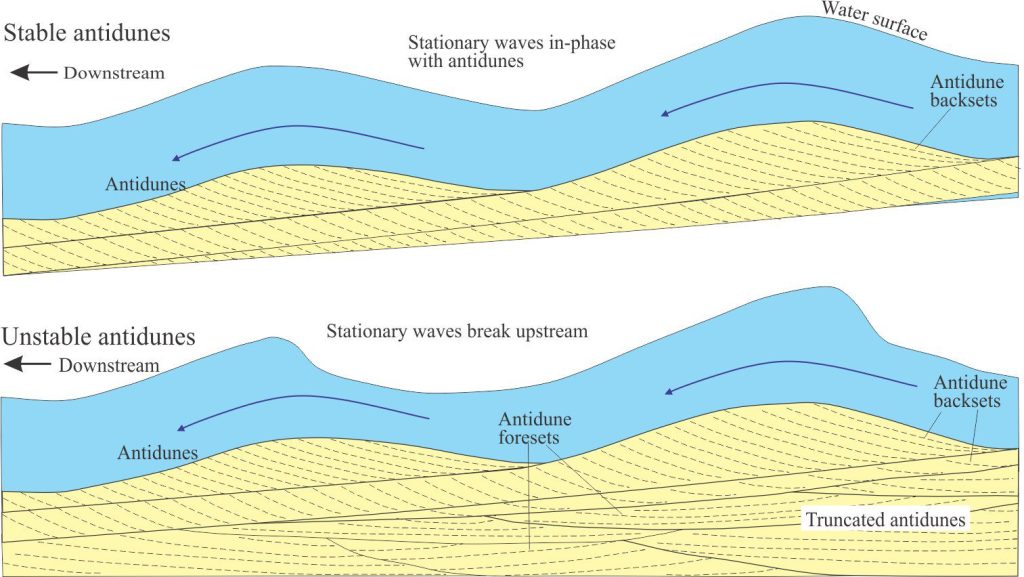
Antidunes and their corresponding surface waves (standing waves) develop during supercritical flow; note that hydraulic jumps only occur during waning flow from super- to subcritical. They are common in steep gradient rivers during normal flow, and low gradient rivers in flood. They also form during glacial outbursts, some sediment gravity flows, and in dilute pyroclastic density currents and pyroclastic surges.
Heydari et al., 2020, identified variably degraded, parallel linear ridges in Gale crater of probable Late Noachian age (≥ 3.6 Ga) that they interpret as antidunes. The gravel-sand ridges are 150 m apart (inferred wavelength) and at least 10 m high. They are part of the Hummocky Plains Unit (HPU) located on the crater floor beyond the flanks of Mt. Sharp. Each ridge, or hummock is draped discordantly on the upflow side by crossbedded sandstone (the Stratified unit – SU). The bedform makeup of the HPU appears to be composite. Formation by gigantic floods is inferred, although the mechanism for release of such huge volumes of water is speculative.
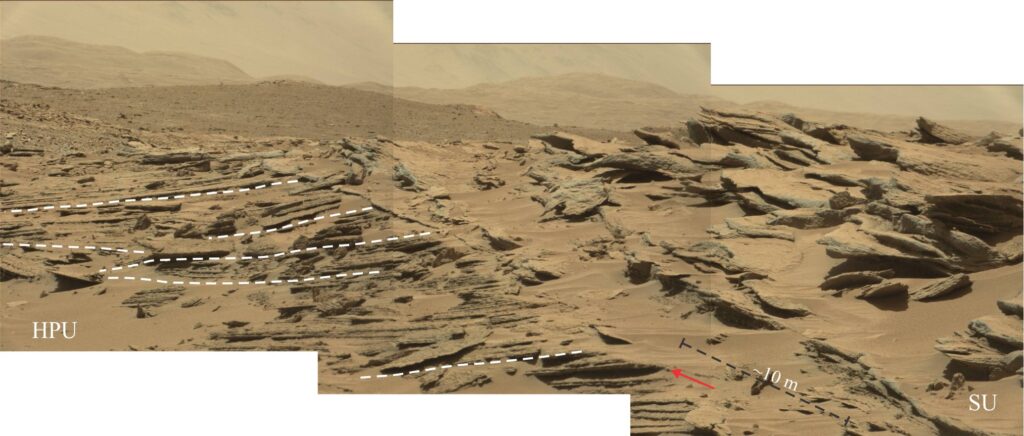
Parallel lamination
Parallel lamination forms at two extremes of flow; subcritical flows where velocity is high enough to move grains but not sufficient to form ripples. At the other extreme, flow near the transition from subcritical to supercritical, but not high enough to form antidunes. The physical characteristics of both types are very similar.
- Laminae are flat, parallel, usually horizontal or close to it, and develop in fine- to medium-grained sand. Individual laminae are one to several millimetres thick; laminae sets (i.e., multiple laminae) are usually a few centimetres to metres thick.
- Subcritically deposited laminae are commonly interbedded or laterally associated with ripple and small-scale trough or tabular crossbed lithofacies. Supercritical deposits may be associated with antidunes and cyclic steps.
- Subcritical laminae commonly are lined by mica flakes. Terrestrial examples may be lined by small carbonaceous fragments.
- One of the more recognisable structures associated with supercritical laminae is parting lineation. This structure is revealed as a series of subparallel grooves and ridges, one to two grains thick, on exposed bedding. The long edges of both grooves and ridges approximately parallel the sediment transport direction – a useful indicator of paleocurrent flow although the actual flow direction is ambiguous unless there is corroborating evidence from unidirectional sedimentary structures.
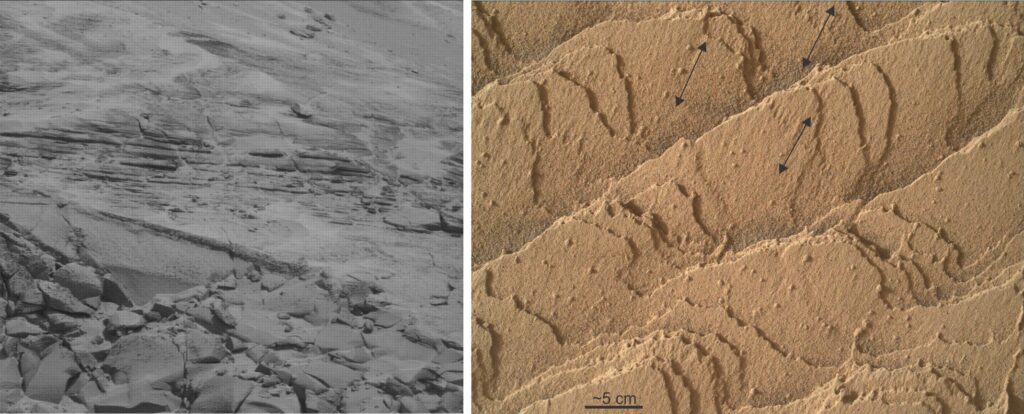
Other posts in this series
Martian Stratigraphy – The Framework
Stratigraphy of the rocky planets
